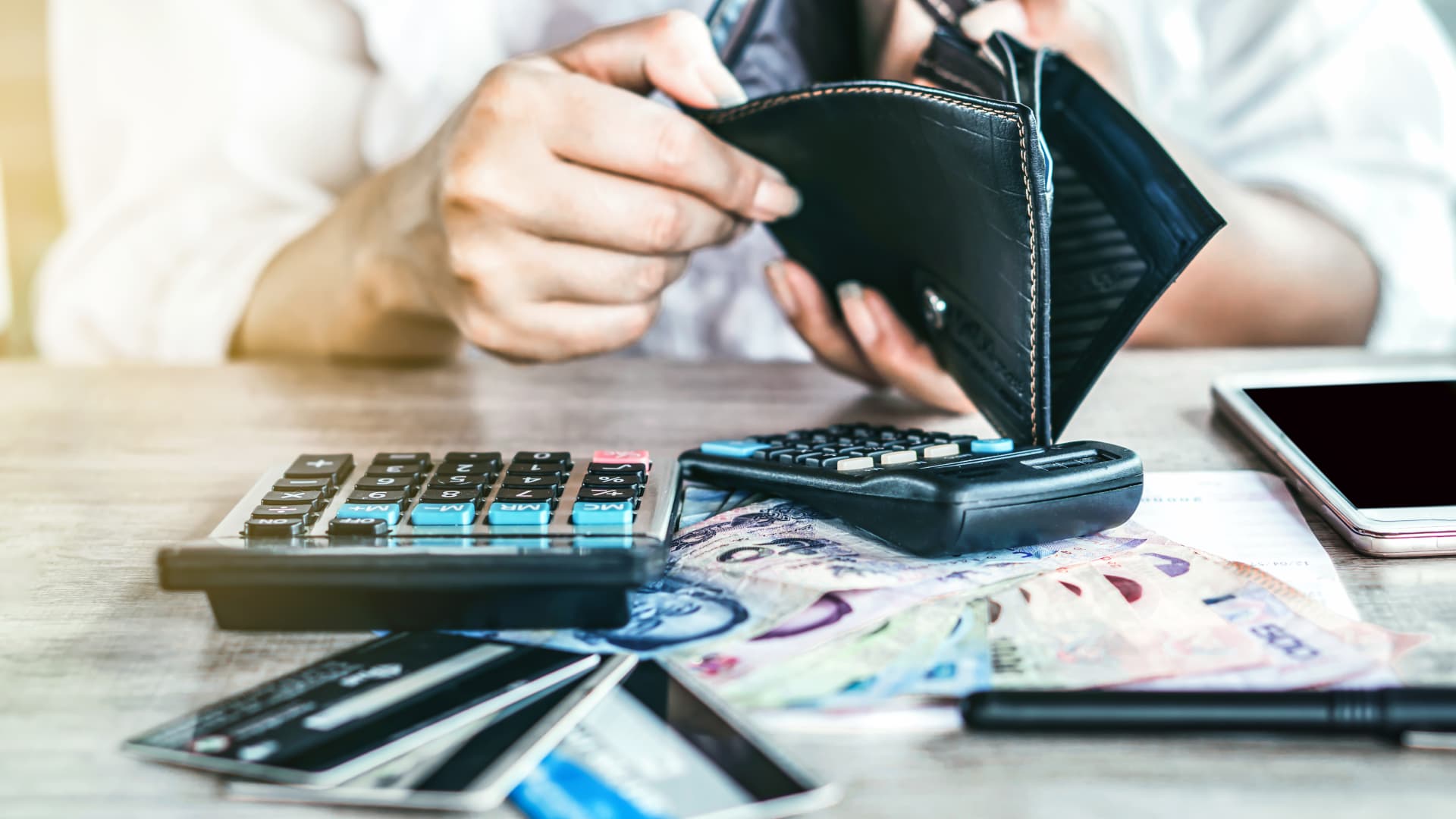Products You May Like
Rising interest rates have pushed the annual percentage rates on credit cards to new highs.
The average annual percentage rate on a new credit card is now more than 20%, according to LendingTree’s tracker. It’s the first time that rates have topped 20% since the tracker began in 2018.
“When you factor in that the cost of everything is rising seemingly on a daily basis, the last thing consumers need is for credit card rates to hit a new high, but that’s where we are,” said Matt Schulz, chief credit analyst at LendingTree.
And rates are poised to go even higher across the board.
The Federal Reserve in June hiked its benchmark interest rate by 0.75 percentage points, the largest increase in 28 years, and signaled it will continue to raise rates throughout the year to curb inflation.
More from Invest in You:
What the Fed’s interest rate hike means for you
Does inflation have you worried about retirement?
What people expect to spend more on as inflation surges
The rates consumers are paying on credit card debt very closely follow the actions of the Fed, according to Schulz.
“Chances are we’re nowhere near where rates are going to top out,” he said.
That could pose a problem for Americans with outstanding bills.
Credit card balances reached $841 billion in the first three months of the year, according to a report from the Federal Reserve Bank of New York. In the same timeframe, 229 million people opened new credit card accounts, an increase from the previous quarter.
Look for lower rates to pay off debt
It’s a great idea to try to tackle outstanding credit card debt, if you have it, to avoid paying more on that balance as those interest rates rise.
“The biggest key to get out of credit card debt is to not be paying a high interest rate on that debt,” said personal finance expert Suze Orman.
One of the first steps Orman advises for those looking to chip away at credit card debt is to see if you can lower your interest rates.
Doing this will help you pay off your debt faster and make sure more of your money is going toward knocking out what you owe, instead of accumulating interest.
There are a few ways to do this, such as a balance transfer to another credit card with 0% interest rates for a certain period, taking out a personal loan with a lower interest rate to pay off your credit balance or working with credit counselor to consolidate your debt with a lower rate.
These options will depend on your personal situation and your credit score, Orman said.
For those with lower scores, she recommends reaching out to the National Foundation for Credit Counseling for assistance in lowering your interest rate and getting on a payment plan.
Pick a repayment method
If you are going to pay off your debt while keeping your cards open, there are generally two methods that people use to wipe away a balance, according to John Scherer, a certified financial planner and founder of Trinity Financial Planning in Madison, Wisconsin.
One is to round up all your outstanding debts by balance and start by paying off the smallest one.
“Then you get momentum,” Scherer said. “You see some of those things fall off the books, and it feels really good.”
The second model, which Scherer personally recommends to clients, is to look at all your outstanding debt and pay off the one with the highest interest rate first. Over time, this means you’ll pay less money to knock out your debt because you’re tackling the highest interest rates right away.
Orman also recommends this approach.
She says to round up your credit card debt and add up all the minimum payments due each month. From there, add 20% or more to your total payment and apply it to the debt with the highest interest rate. Once that’s paid off, roll that extra payment to the next card, and then the next until everything is wiped away.
Boost savings
In addition to paying down your debt, make sure that you’re putting aside some money to build up emergency reserves, said Scherer. This is to keep you from accumulating more debt while you’re working to pay off your existing balance.
“You get it paid off, but then the transmission blows or the refrigerator takes a dump on you and now you’re back on the credit card for another thousand bucks,” he said.
If you want to keep your credit cards open so you don’t mess up your credit score but not use them as much, Orman suggests hiding them from yourself.
“What you might want to do is take all your credit cards, put them into a plastic bag and put them in the freezer,” she said. “Do not tempt yourself.”
SIGN UP: Money 101 is an 8-week learning course to financial freedom, delivered weekly to your inbox. For the Spanish version Dinero 101, click here.
CHECK OUT: 74-year-old retiree is now a model: ‘You don’t have to fade into the background’ with Acorns+CNBC
Disclosure: NBCUniversal and Comcast Ventures are investors in Acorns.
